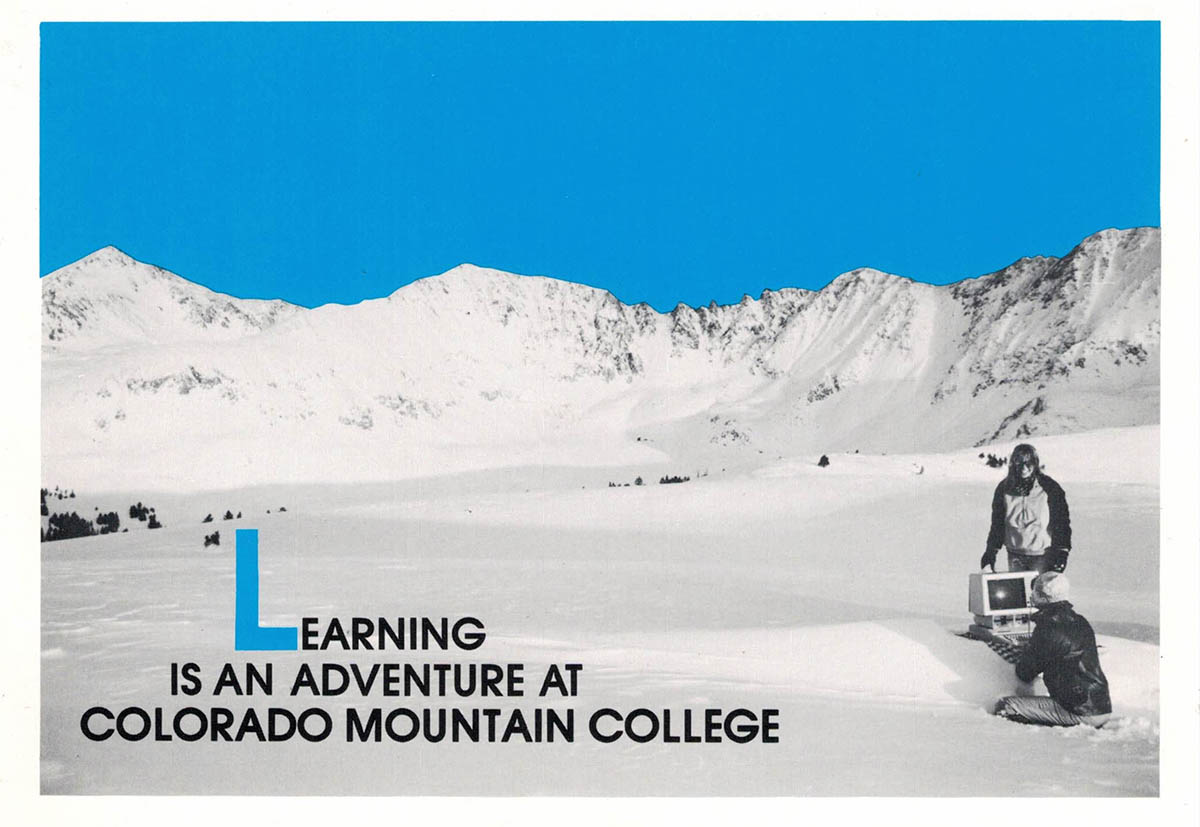This is the eighth installment in a multi-part series in the Glenwood Springs Post Independent celebrating Colorado Mountain College’s 50th anniversary.
Back in 1967, when Colorado Mountain College offered its first classes, about the closest students got to interacting with computers was watching Spock and Captain Kirk flip open their handheld communicators in a television series called “Star Trek.”
Fifty years ago, CMC students couldn’t begin to dream how educators could reach students through today’s virtual classroom.

But now, a student from virtually anywhere with access to a computer and the web can earn an Associate of Arts or Associate of General Studies degree from CMC entirely online. Students can also take classes online toward a bachelor’s degree without physically entering a Colorado Mountain College building, though a fully online bachelor’s degree from the college is not yet available.
Daryl Yarrow, the college’s associate vice president for online learning, and his small but mighty staff based at CMC’s Glenwood Center support students locally or anywhere in the world. Interacting with all of Colorado Mountain College’s 11 locations, this department works with dozens of discipline coordinators, counselors and faculty, to deliver to students courses taught entirely over the internet, via interactive video, or through a hybrid of classroom/internet access.
Like teaching in a physical classroom, instructing classes online is an art, said Karen Kaemmerling, CMC’s online learning assistant dean of instruction. Online instructors, many of whom teach the same courses on campus, receive training in Canvas, a learning management system that many faculty also use in teaching face-to-face courses.
Canvas allows students to access online courses at will, though students still adhere to a syllabus and schedule, and regular communication is maintained between student and instructor throughout the semester. WebEx, a program that provides educators and students ways to interact in real time, gives an instructor the ability to schedule times to be online for teaching or holding office hours.
How it began
Retired professor and administrator George Bagwell has written that he remembers first hearing about a California phenomenon known as the telecourse in 1987, when he headed the CMC campus in Steamboat Springs. “Alaska was applying the idea for its sparsely populated, harsh-environment communities,” Bagwell wrote, and then-interim-president Armen Sarafian thought it might also benefit students because of the district’s mountainous terrain. In 1988, Colorado Mountain College adopted distance education as an instructional delivery method.
Those telecourses in the ’80s looked much different than online learning does today. Essentially, prerecorded videotapes were physically checked out by students, without the interactive chat, image sharing and specialized tutorials that are found in online learning courses the college now offers.
In the ’80s and ’90s, students often called their instructors on landline phones and mailed their assignments to faculty via the U.S. Postal Service. Today, students can instantly chat online during mutually convenient times and send assignments electronically.
Since distance learning was introduced, its popularity has steadily increased. From 2000 to 2010, for instance, online enrollment more than doubled.
“Today, it’s really unusual for a college to not offer online learning,” Kaemmerling said. “Students in this generation are expecting it. They’re walking away from high school with these skills. Plus, the technology has improved so much, that students of all generations rarely need a lot of support.”
One solution to bridge closure
During CMC’s first semester in ’67, the Grand Avenue bridge was just 14 years old. Now, with the bridge scheduled for closure and replacement from mid-August until mid-December – during most of CMC’s fall semester – online learning offers a prime way to enroll in classes for current or prospective students who might otherwise get caught in traffic.
“Online learning offers real opportunities regardless of natural barriers,” Kaemmerling said. “We’ve strategically talked about the advantages students have who choose to take an online course during this time. We serve anyone willing to enroll.”
